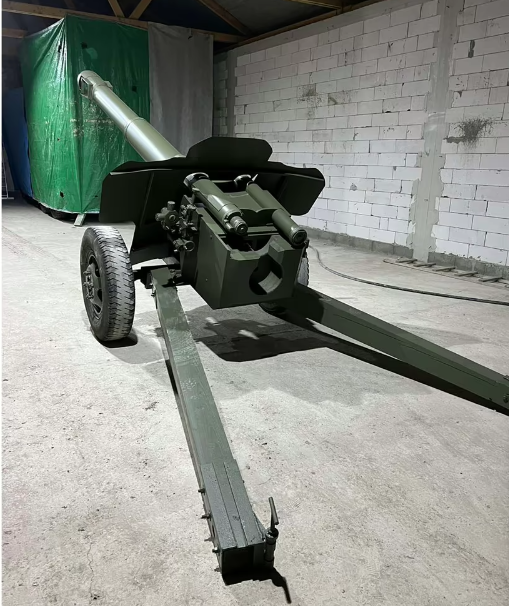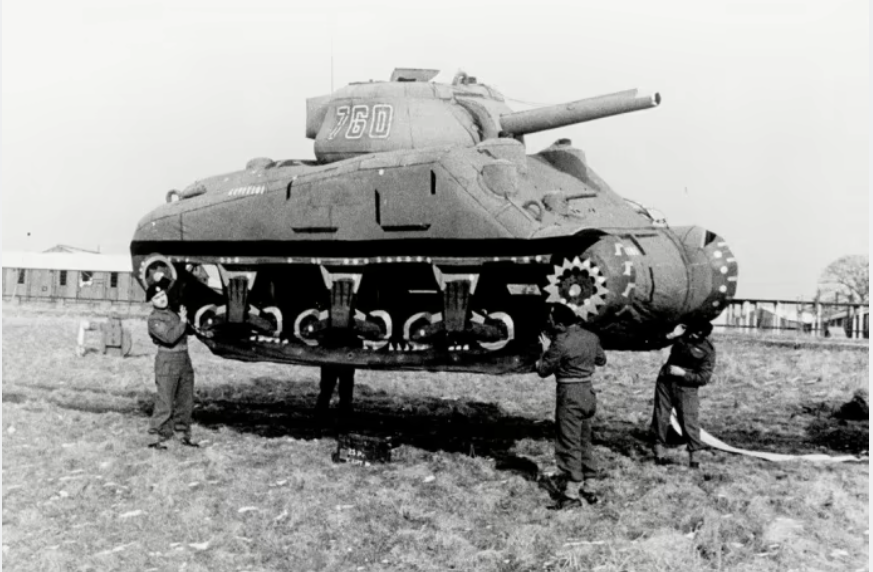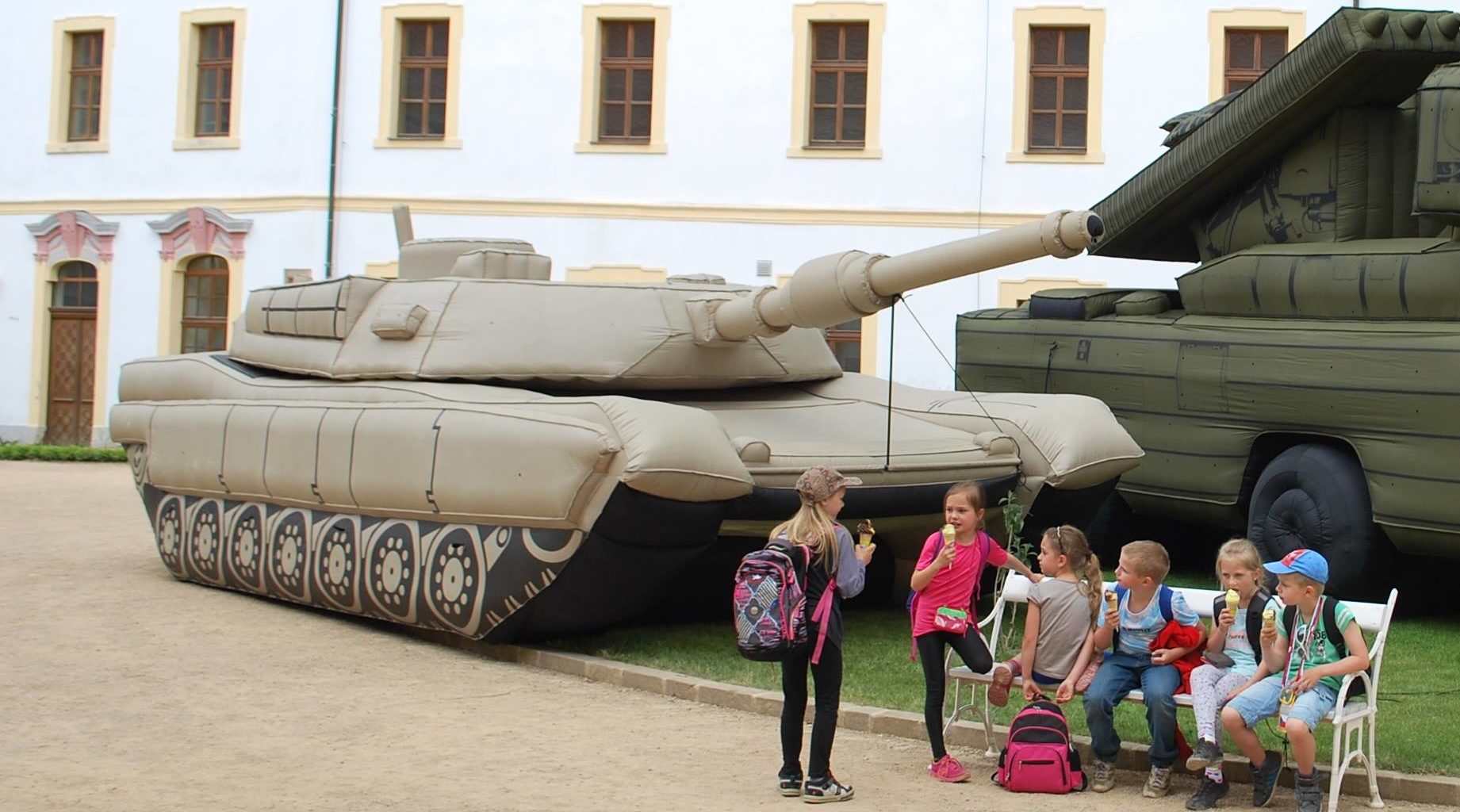― Sun Tzu, The Art of War
The Ukrainian military employs decoys mimicking expensive and critical weapons systems to deceive Russia and prompt the wasteful expenditure of precision missiles.
While mock weaponry may be the only imitation in this brutal war of life, death, love, and hatred - these decoys undeniably serve their purpose, safeguarding Ukrainian troops and preserving invaluable equipment.
Mykhailo Kryhel of Ukrainska Pravda investigated the development and production processes behind such decoys. Euromaidan Press has summarized his findings for you.
From Stugna to HIMARS: Ukraine's decoy evolution
The first Ukrainian weapon system to be replicated as decoys was the Stugna anti-tank guided missile, says volunteer Mykhailo Roman, coordinator of the "Zakarpattia Military Support Movement - Vynohradiv." Initial Stugna mock-ups used metal, plastic drainage pipes, and wood.

"The military jokes the main flaw of our decoys is they don't actually shoot," Roman remarks. Early prototypes cost around $100 but prices dropped to $30 as production increased.
Roman's team sent some 200 Stugna decoys to the frontlines without military oversight, filling specific unit requests.
After the Stugna, Roman tackled the 14-meter 152 mm D-20 howitzer, dubbed "Bosorkanya" – a mythical witch figure.

"We'll definitely try replicating a tank model too. I've had calls from the General Staff about scaling up our experience," the volunteer shared.
The General Staff refused to comment, citing sensitivity. Still, details trickle out.
In August 2022, The Washington Post reported that the Russian army had been hunting wooden decoys of HIMARS rocket artillery across Ukraine. At that time, Moscow boasted of their "destruction" almost daily. According to WP, Russia wasted at least ten $6.5 million Kalibr cruise missiles on these decoys in the initial weeks of the HIMARS deployment.
HIMARS decoys predated the real system's arrival, produced by a major Ukrainian manufacturer.
"Externally it was indistinguishable from the original down to tiny details," an insider recounted. "Only the gear-shifting sound gave away it was a retrofitted truck - but you'd need real expertise to notice. One Ukrainian official first saw it and asked the plant director: 'Why do you have a HIMARS here?'"
The HIMARS decoys served a dual purpose: diverting Russian strikes and identifying enemy spotters. By strategically placing and moving the mock-ups, Ukrainian forces lured out Russian observers who reported the decoys' locations.
The role of mock-ups in Ukraine's war
In August 2023, Metinvest Group, owned by Ukrainian oligarch Rinat Akhmetov, announced producing over 250 decoys of radar systems, D-20/D-30/M777 howitzers for the military. They also claimed Russia destroyed a mock-up of Ukraine's Malakhit radar.

However, after Western outlets like The Guardian, FT and CNN reported on Metinvest's program, the company stopped public commentary.
In early March 2024, Russian milbloggers boasted that after Ukrainian troops withdrew from Avdiivka in Donetsk Oblast, Russian forces captured a mock-up of the Sentinel radar system. They claimed the decoy was extremely realistic and believed such decoys were being supplied to Ukraine by Western partners. However, there is no evidence or official confirmation of Western-made decoys being used in Ukraine.
The Czech company Inflactech, which specializes in inflatable mock-ups, began producing HIMARS decoys after Russia's full-scale invasion of Ukraine, but it's unclear if Ukraine is a client. Interestingly, nearly 50% of the Czech firm is owned
by individuals officially residing in Moscow.
Previously, the Ukrainian military reported Russian troops using inflatable and wooden mock-up military equipment in occupied Ukrainian territories and Belarus, without specifying the suppliers.
Meeting the demands of modern warfare
Deceiving the enemy is quite challenging due to multi-spectral radars. Thus, stringent requirements exist for weapon system mock-ups:
- Decoys must imitate not just external appearance, but also electromagnetic, radar, thermal, and acoustic properties identical to the real system.
- They require special simulators to mimic explosions and fires after missile/artillery strikes.
- Camouflage must narrowly balance being undetectable yet visible enough to attract fire.
- Minimal personnel required for decoy operation and maintenance.
Ukrainian Minister for Strategic Industries Oleksandr Kamyshin believes domestic industries and volunteers can fully supply the military's decoy needs.
"Here's how it should work. Manufacturers say 'We can make anything. What do you need?' Then someone comes to them: 'We're getting Archers soon. We need 9 decoys for concealment - 3 inflatables, 3 plywood, 3 high-fidelity.' That's it," Kamyshin explains.
However, military experts warn that unsystematic decoy usage remains the core issue.
"In skilled hands, such mock-ups can safeguard lives and equipment while forcing the enemy to expend costly munitions. But ineptly used, decoys can backfire - prompting more careful enemy reconnaissance instead of indiscriminate strikes," revealed a source involved in providing decoys to Ukraine's forces.
The idea of each brigade having a dedicated camouflage company remains unrealized. Yet many experts estimate systematic decoy employment could reduce military equipment losses by 30-50%. Every destroyed Patriot missile system mock-up represents a real air defense system preserved.
The Ghost Army: masters of WWII battlefield illusion
The concept of specialized military units dedicated solely to camouflage and concealment is not new.
In 1943, the US Army recruited over 1,000 artists, architects, and performers into a top-secret unit: the Ghost Army. This ingenious camouflage force used inflatable decoys and sonic trickery to deceive Nazi reconnaissance.
Within hours, they could construct mock airfields, armor formations, and barracks convincing enough to draw enemy fire. Signal teams faked radio traffic while sound trucks blasted reinforcement noises up to 24 km away.
Artist Arthur Shilstone, one of the "ghosts," recounted encountering two awestruck French cyclists in a Normandy village, watching four GIs shoulder-carrying a 40-ton Sherman tank - an inflatable replica.
"They looked at me in silence, searching for answers, so I finally said: 'American soldiers are very strong.'"

So effective was their deception that the unit's existence remained classified for over 40 years after WWII. Only in 1985 did the "Ghost Army" emerge from the shadows.
In 2022, with just 9 veterans surviving, President Biden approved awarding them the Congressional Gold Medal. A Capitol ceremony finally recognizes their unsung heroics on 21 March 2024.
***
Military camouflage evolves constantly, with the boundary between mock-ups and actual weapons gradually disappearing.
In the West, research explores using drone swarms to appear as helicopter attacks on enemy radars. The idea of visual decoys created via 3D holograms no longer seems like science fiction.
With its vast wartime experience, Ukraine will undoubtedly contribute innovative deception solutions to the world.
Read more:
- CNN: Russian forces destroyed hundreds of units of decoy Ukrainian equipment
- Ukraine starts utilizing iron decoy equipment to deceive Russian strike drones
- Ukraine uses HIMARS-look-alike wooden decoys to lure Russia into wasting long-range missiles

